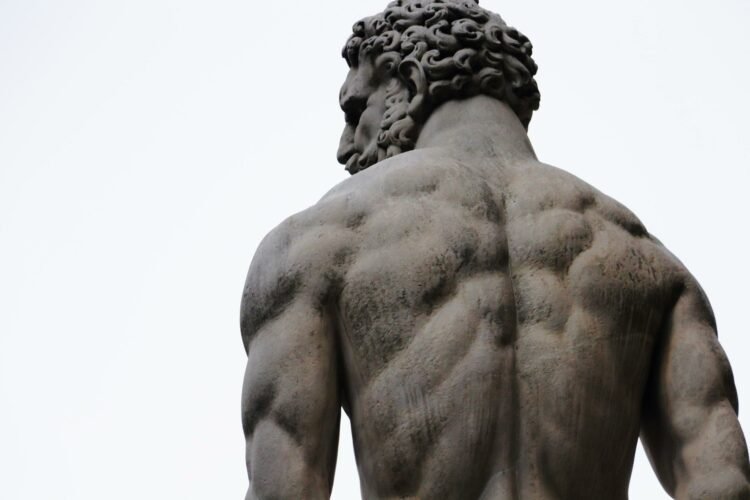Over the past decade it seems like there has been an increased amount of pressure when it comes to the physical appearance of men. For so long it seemed like body shaming was only directed at women, but sadly, the issue is now being targeted at the male half of the population as well, and we only have to read a newspaper or online article to witness it first-hand.
With men now feeling more body conscious due to images constantly being uploaded to the likes of Facebook and Instagram, you’d be inclined to think the issue has only been around for the past few years. Unfortunately, men have been faced with competing for the ‘ideal’ bodies throughout history; dating back as far as the ancient Greek times.
To shed some light on just how long men have been faced with wanting the ‘ideal’ body to fit in with society, Chemist Click launched a campaign which explores exactly what was seen as the desired body images throughout numerous eras in our history. Below are a few examples we want to share with you.
Ancient Greece: 800 BC – 146 BC

Greek mythology played a large part in how men wanted to look during ancient Greek times. Men across the country strived for muscular and very lean physiques, which was almost impossible to achieve during this era. These ‘ideal’ body images were reflected in numerous paintings and sculptures that are still viewed in today’s world; which would have only added to the pressures men were facing during these times.
It wasn’t just a certain body type man wanted to achieve during this time either. When it came to desired hairstyles, men wanted long hair which was kept tidy with a headband. During ancient Greek times, this type of hairstyle would symbolise wealth and power and was most commonly associated with Greek gods such as Zeus and Apollo.
The Gilded Age: late 1800s – early 1900s
During the late 1800s the desired body for men had taken a drastic turn. Throughout many eras, men would desire a muscular and thin physique, but this was no longer the case. During this time, industrialisation was at its peak, as was displaying your financial wealth, and a large waist and rounded stomach was the most common way to symbolise this.
It was said that having a rounded stomach would reflect your economic wealth and ability to afford good food; which meant a slimmer body structure would indicate you were a poorer member of society.
The Decade of the Bodybuilder: 1980s
The 1980s saw the beginning of the bodybuilder era, with men across the world wanting to match the bodies of Hollywood A-Listers including Arnold Schwarzenegger and Sylvester Stallone. The bodybuilding craze saw men wanting to achieve a look consisting of bulging biceps and large body structures; but in reality, only a small number of people would be able to achieve this. Although bodybuilding isn’t as popular now, the trend still plays a part in how men want to look in the modern day.
One thing that is still associated with many men from the 1980s was the iconic mullet. This famous hairstyle saw a shorter style at the front, with a longer section of hair at the back of the head.
The Age of the ‘dad bod’: 2015 – present
With men now beginning to take a stance against body shaming, this has seen the rise of the ‘dad bod’. Proving that you don’t have to have a lean and muscular physique to be in a healthy condition, men are now accepting a more natural physique; which has been adopted by actors such as Chris Pratt and Seth Rogan. The ‘dad bod’ has become popular throughout society, as it’s much more achievable than some of the ‘ideal’ body types we have mentioned within this post.
When it comes to modern day hairstyles, men are a lot more comfortable with choosing a style solely down to their personal preference and not current trends. A popular hairstyle over recent years has been a classic faded crew cut, as this option provides a neat and tidy look, as well as being easy to maintain.

After looking at how the ‘ideal’ male body has changed throughout history, you can start to understand that the pressures men face when it comes to their appearance isn’t just a recent thing. From striving for a lean and muscular physique to embracing a ‘dad bod’, hopefully we’re now at a stage where men can be happy with their appearance and simply want to maintain a healthy lifestyle, without feeling like they have to adhere to what society says they should look like.
We want to know what you thought about how the ‘ideal’ male body has changed throughout history and if you’re embracing the ‘dad bod’. Let us know on social, using #NoTypicalMan.

